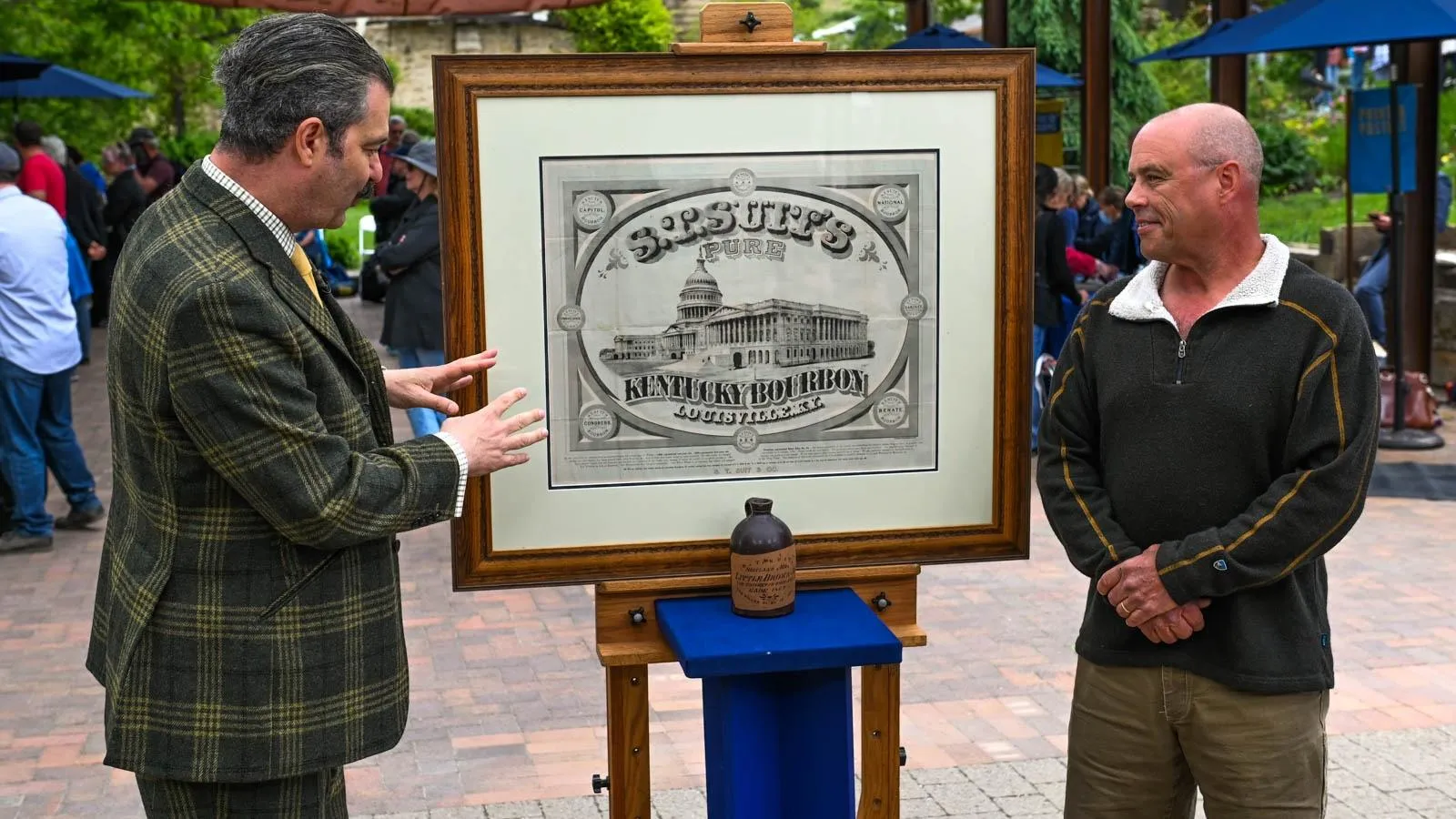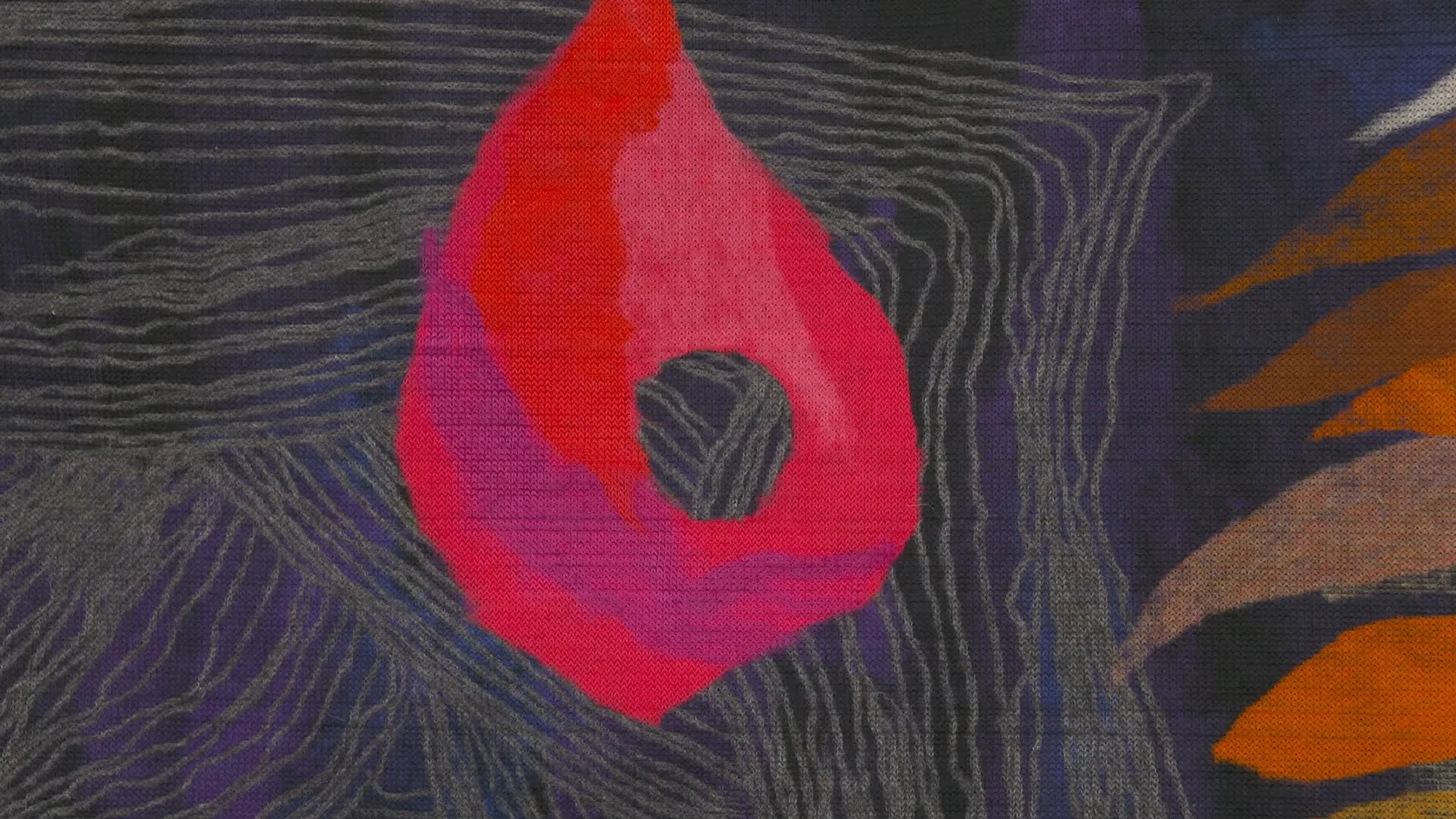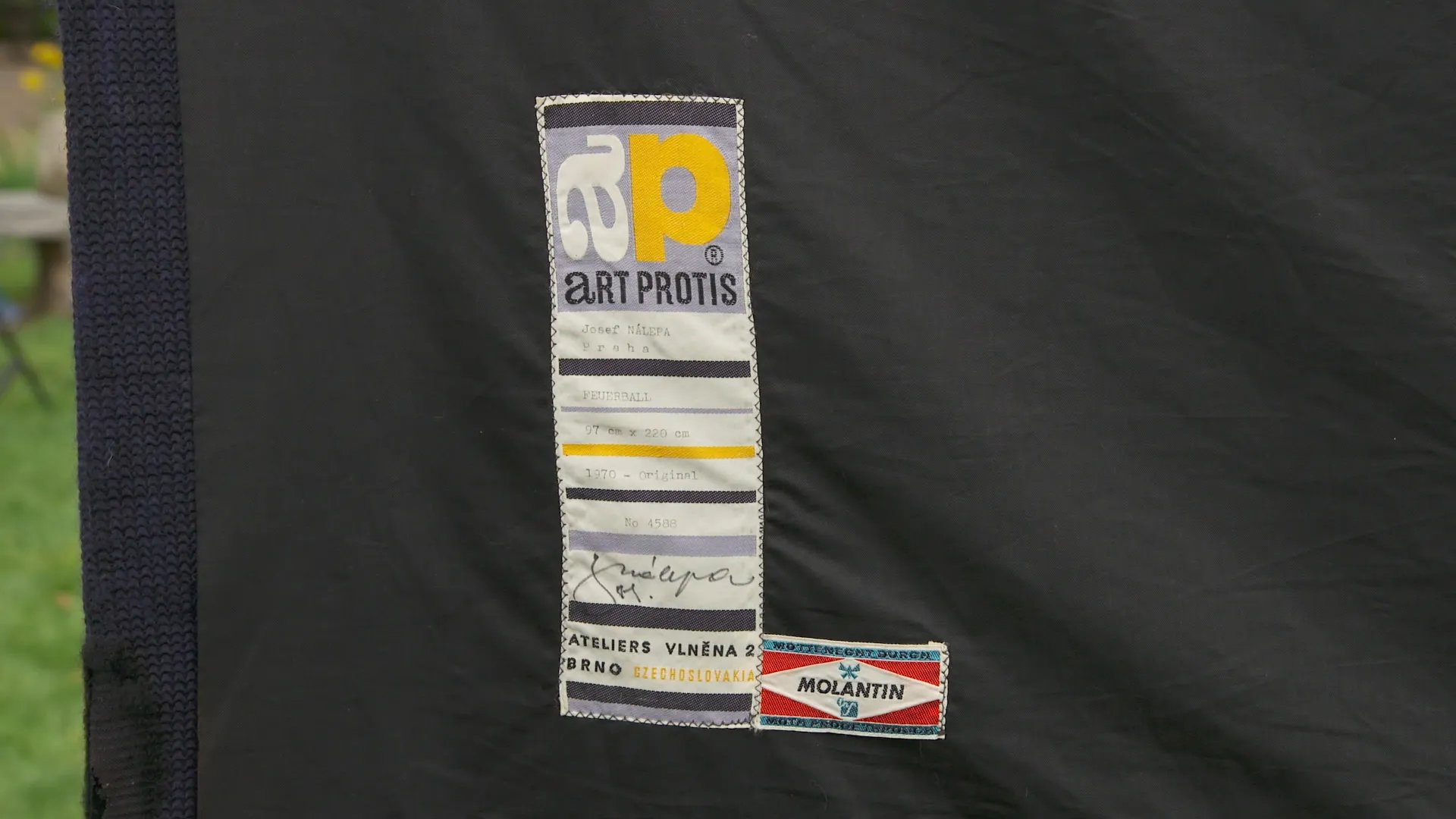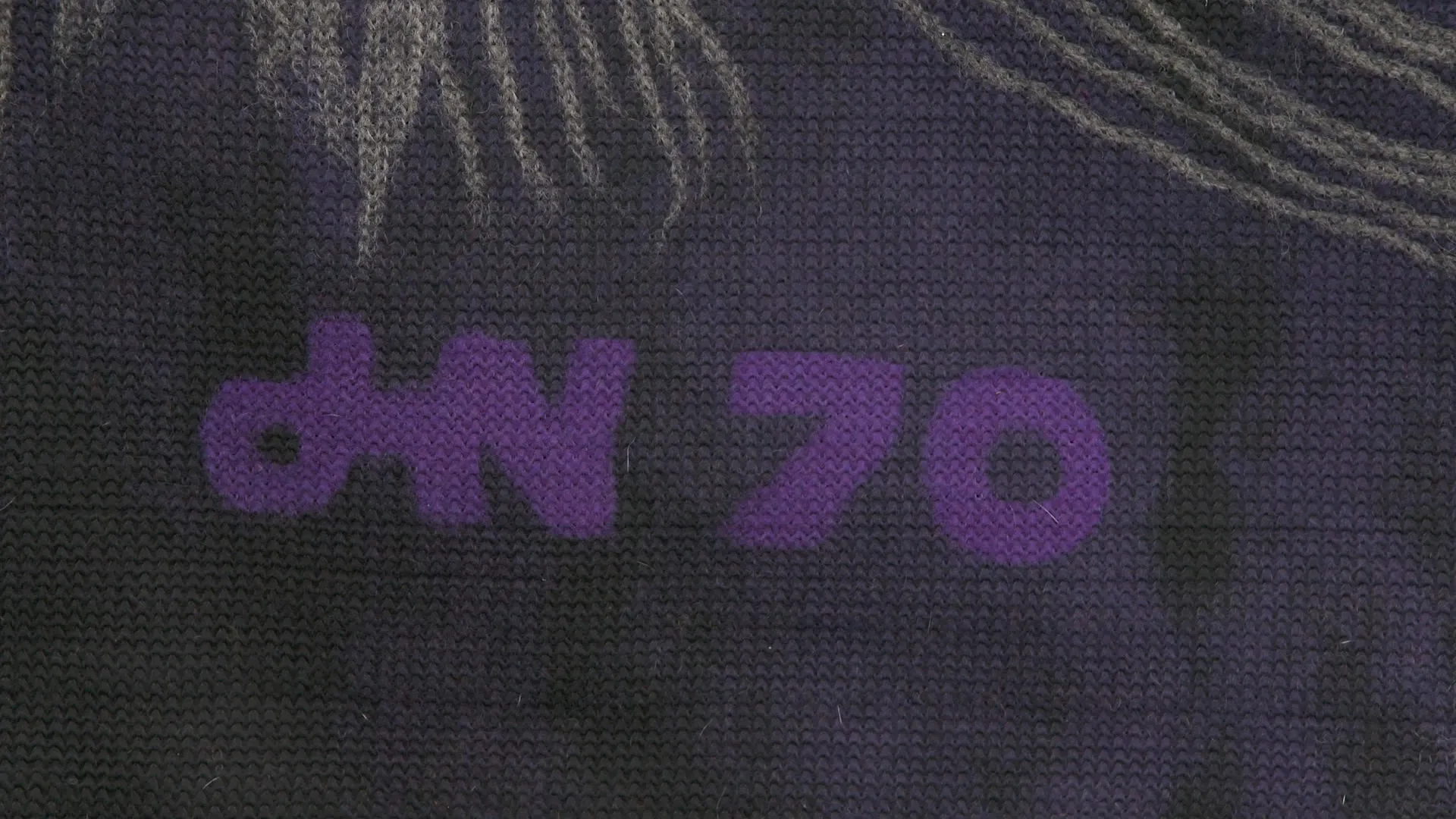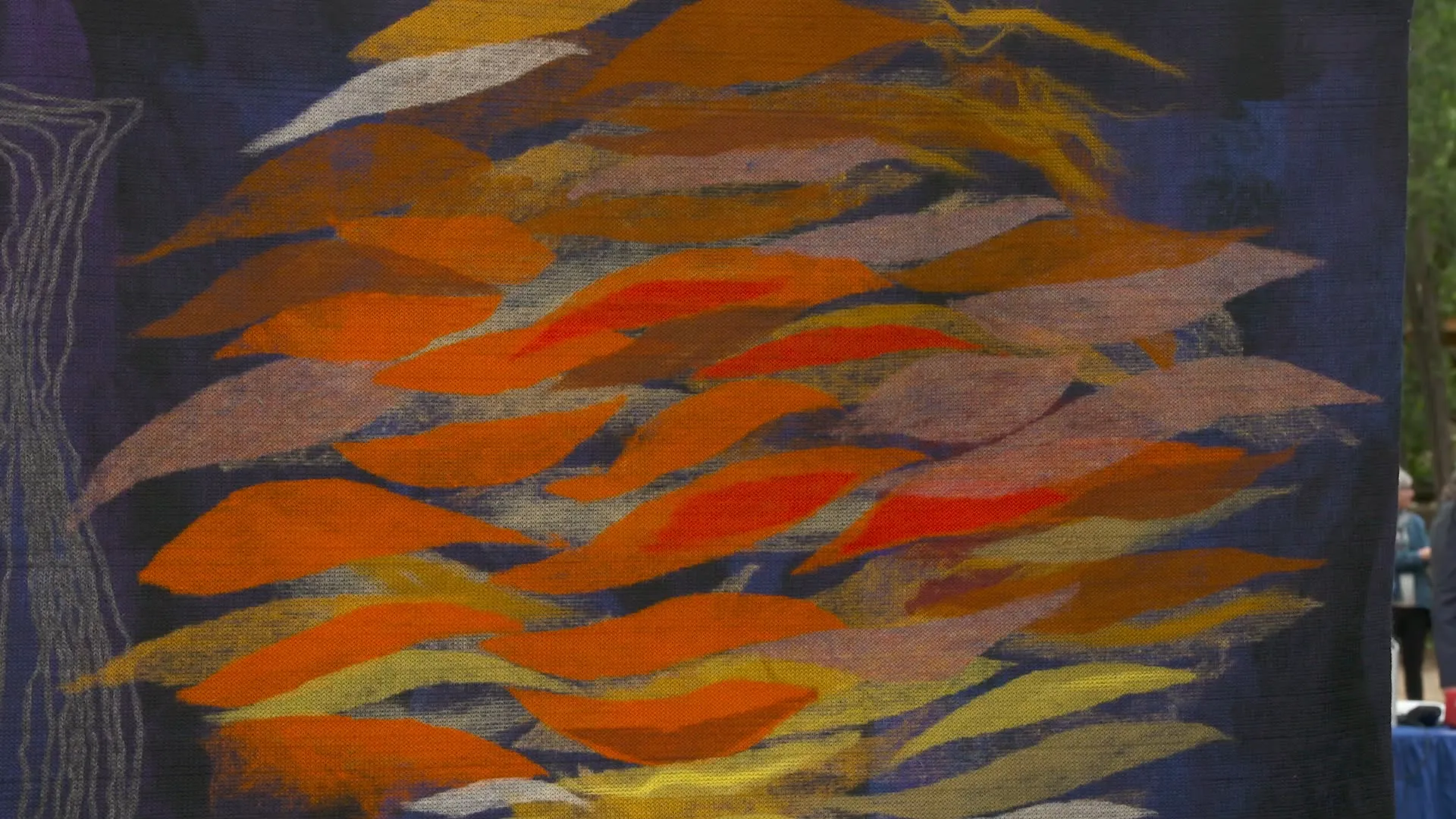GUEST: This is a tapestry that I got from my grandmother. When she was with my, uh, grandpa, he did a lot of work with, uh, flu vaccines, and did work in Eastern Germany with some of the universities. And she fell in love with Eastern European art. And she went back several times, and would bring back art with her. I always thought it was really beautiful. When she was moving out and rearranging things, she went ahead and gave it to me. Had it, uh, hanging up in my, uh, living room ever since.
APPRAISER: It's wonderful for me to see something like this, because people keep saying, "Oh, it, it's a tapestry." You referred to it as a tapestry. And it's not a tapestry. It is a technique called art protis, or art for progressive tapestry. That's in there, but it's a very different technique. It falls into the realm of a non-woven.
GUEST: Oh, so it's not woven at all.
APPRAISER: It is not woven. The technique was created in 1964 in the woolen research institute in Brno, Czechoslovakia. And it was used for monumental public works buildings, to have art for the masses, art that all, the whole public could, could enjoy. A tapestry is an incredibly expensive and time-consuming technique. And let me tell you how this is done. This is wool.
GUEST: Okay.
APPRAISER: You take a wool fleece, you lay it flat. You can then design flat where you want the f, wool to be, the colors. You can make changes, you just lift off the wool fleece. So it's a little bit like making felt. You lay it all down, or you make a mistake, you lift it back up again, you lay it back down. It then gets ironed and sort of sealed together. And the whole thing is stitched onto a substrate. So it's never woven.
GUEST: That's amazing.
APPRAISER: Yeah.
GUEST: So it's, they actually, it's, like, the artist actually laid down exactly what he wanted it to look like.
APPRAISER: Exactly. Exactly, his name is Josef Nálepa, and you and I both could not find anything other than, he, he made some bronzes and some, some sculptures. The technique immediately became popular, and in 1967, at the World's Fair in Montreal and at the World's Fair in Osaka, 1970, it was awarded a gold medal, I believe, probably for manufacturing excellence. This is a, um, a collaboration between a manufacturer and an artist. They would commission artists. This is a, most likely, this is a one-of-a-kind.
GUEST: (whispers): Wow.
APPRAISER: And, and also, it would always be a one-of-a-kind, because he was always laying down something, something anew. This is called Fireball, and it was from 1970. In a really well-supported auction, I'd imagine it selling for between $4,000 and $6,000.
GUEST: (whispers): Wow.
APPRAISER: And in a retail shop, somewheres closer to $10,000.
GUEST: (whispers): Wow. (aloud): That's amazing. I had no idea that there was that much history behind it.

